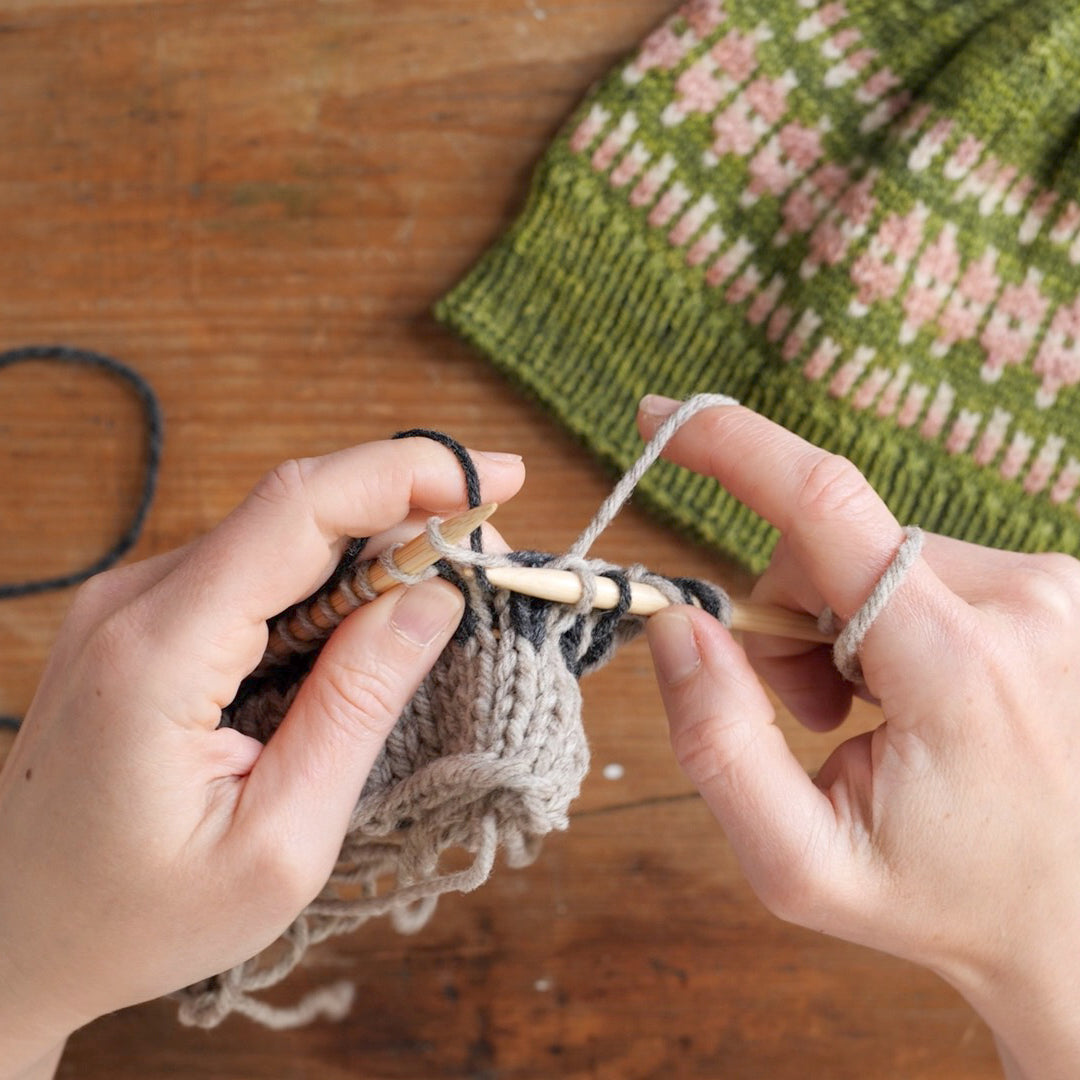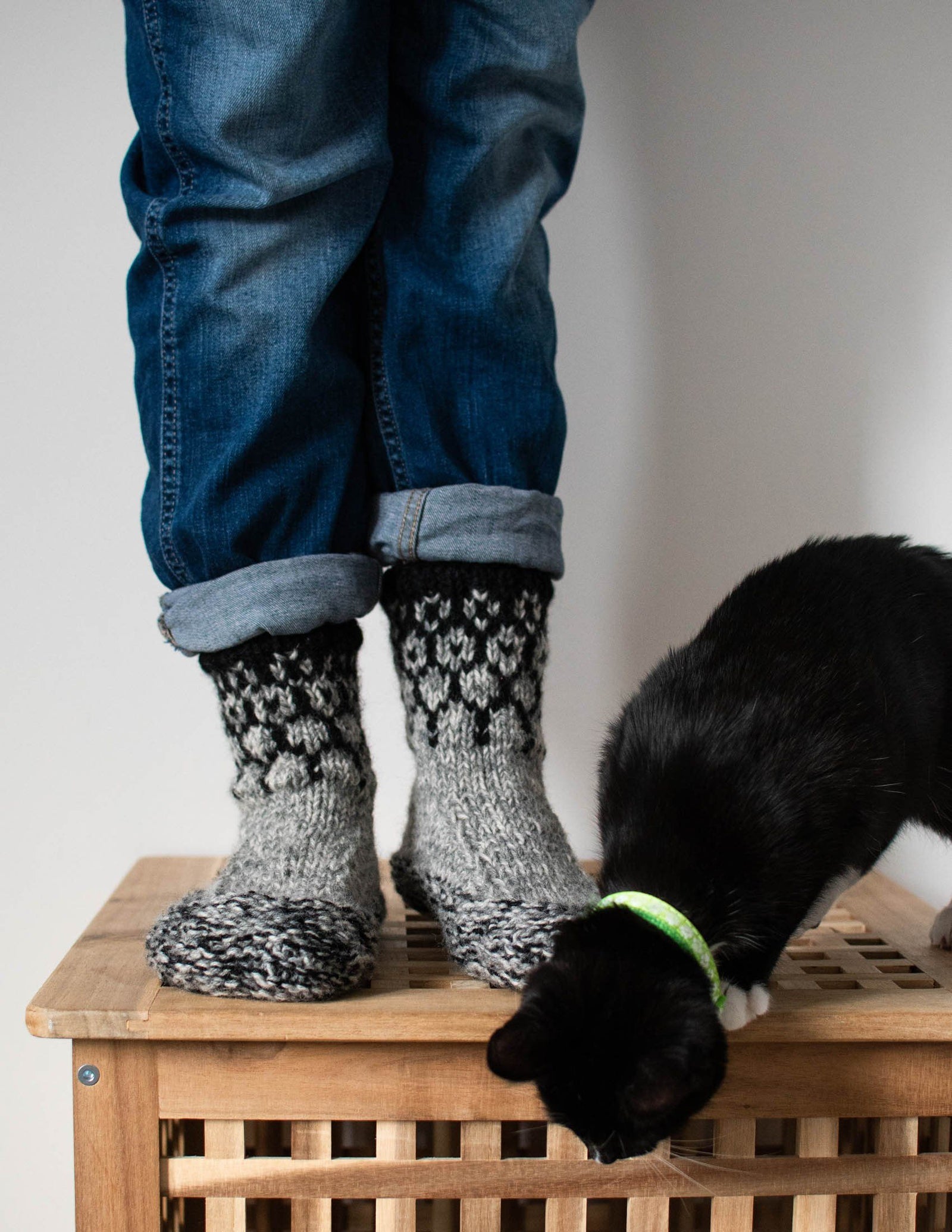
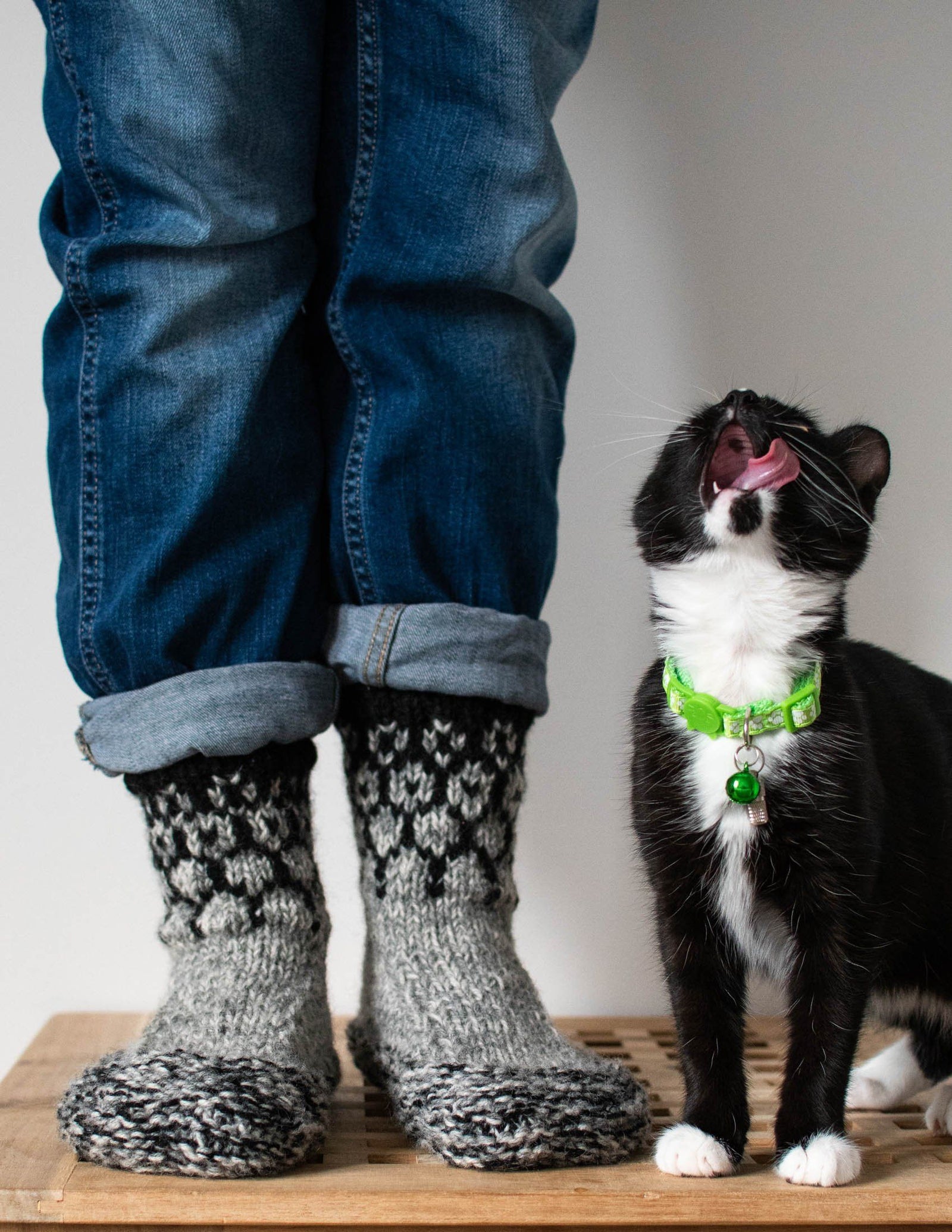
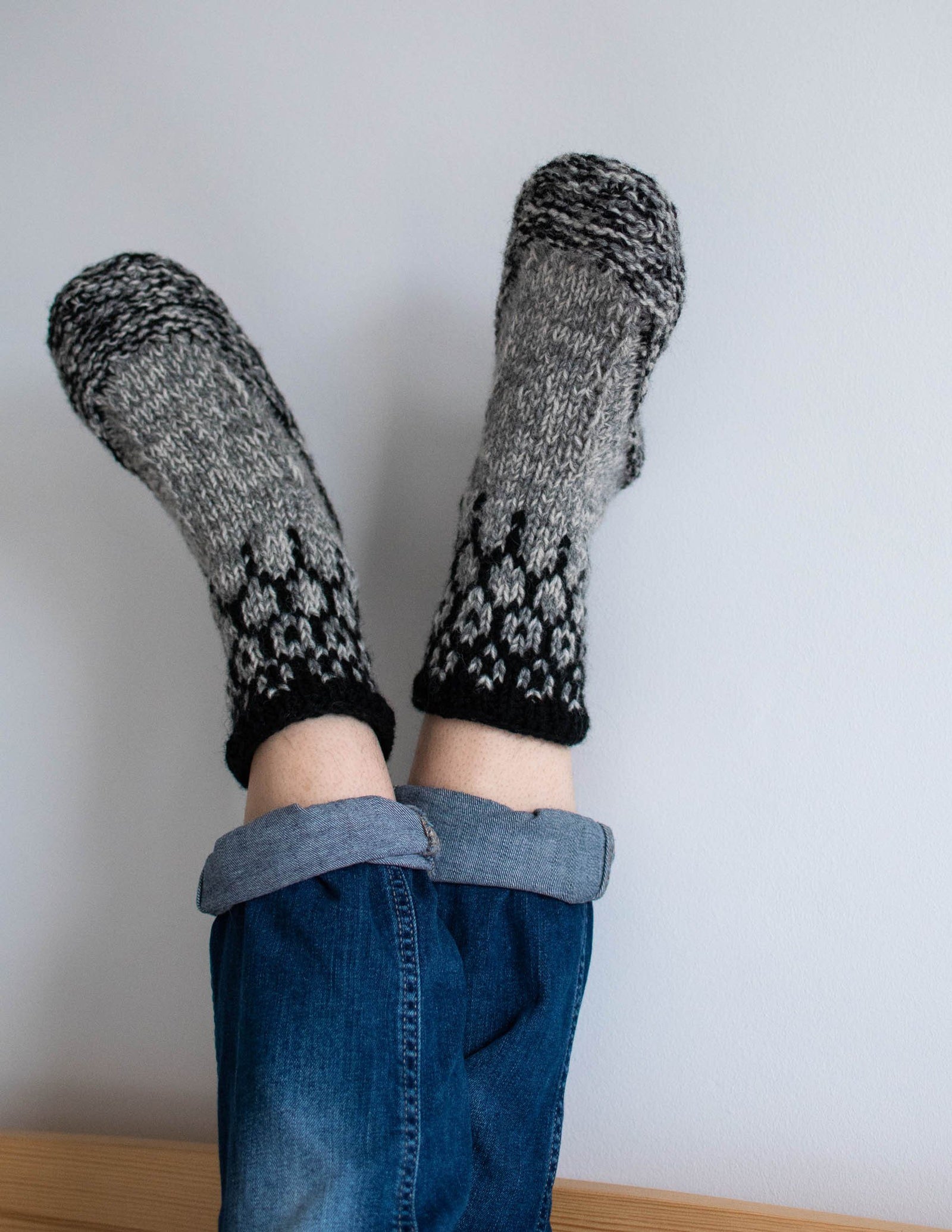
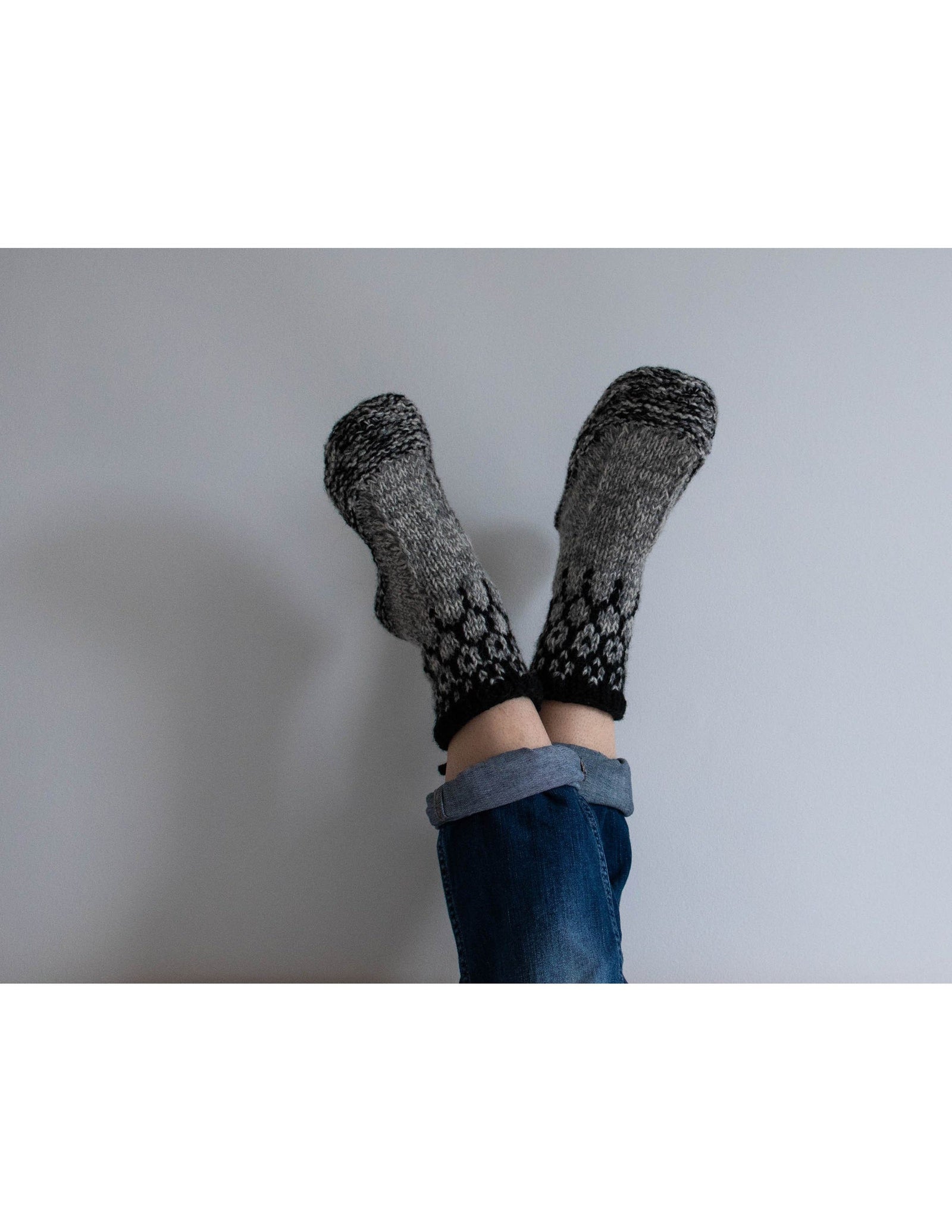
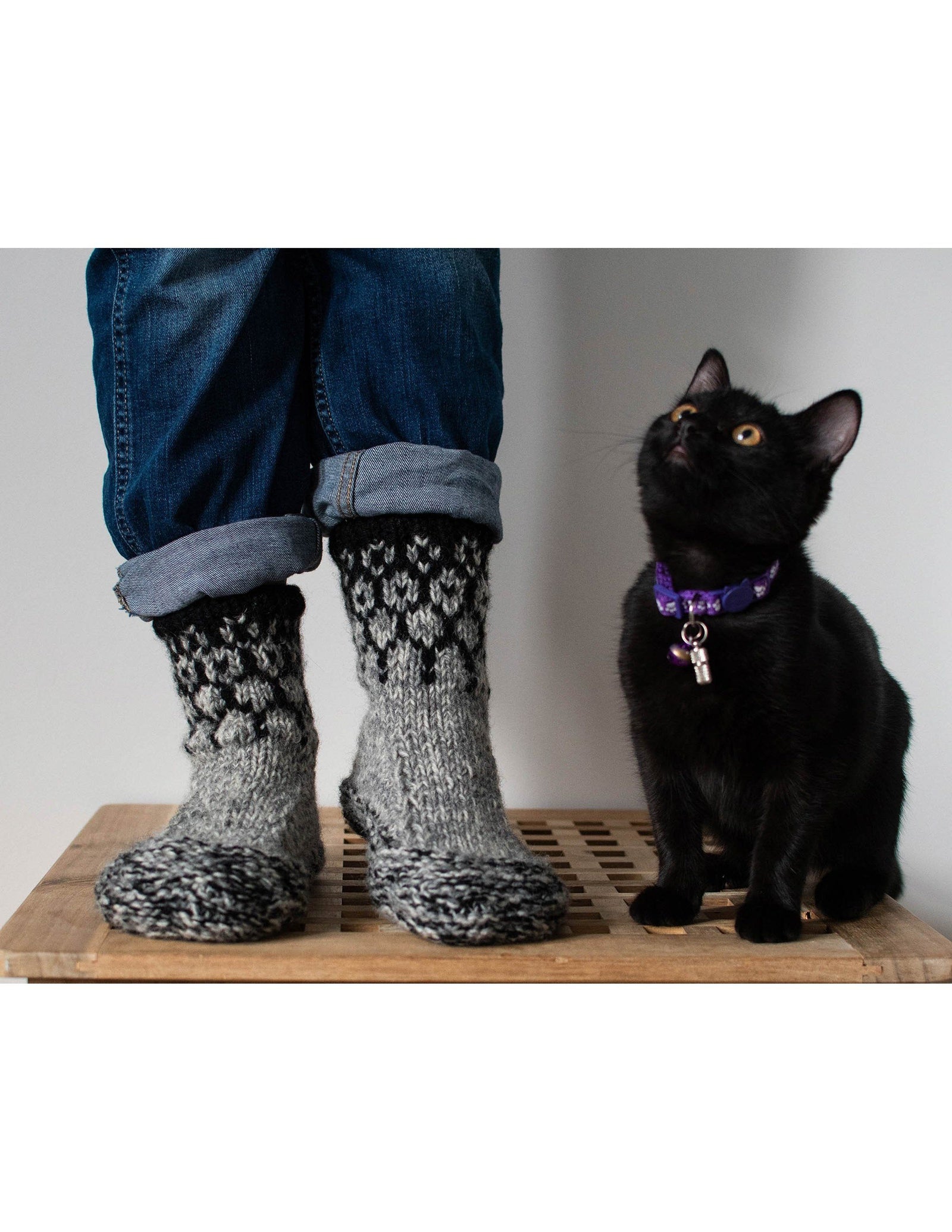
Öröm
- DK (Double Knitting) weight yarn
- xs[s, m, l, xl, xxl] To fit EU shoe sizes: 36-37[38-39, 40-41, 42-43, 44-45, 46-47]
- Also available in Knitworthy 5
- Also available on Ravelry
When designing these I wanted to make something that would look cute, and be comfortable, but sturdiness was top of my list. I achieved that by holding multiple strands of a tough yarn together and working at a tight gauge. The yarn is a tightly spun, traditional Norwegian stocking / boot sock yarn that’s perfect for slippers.
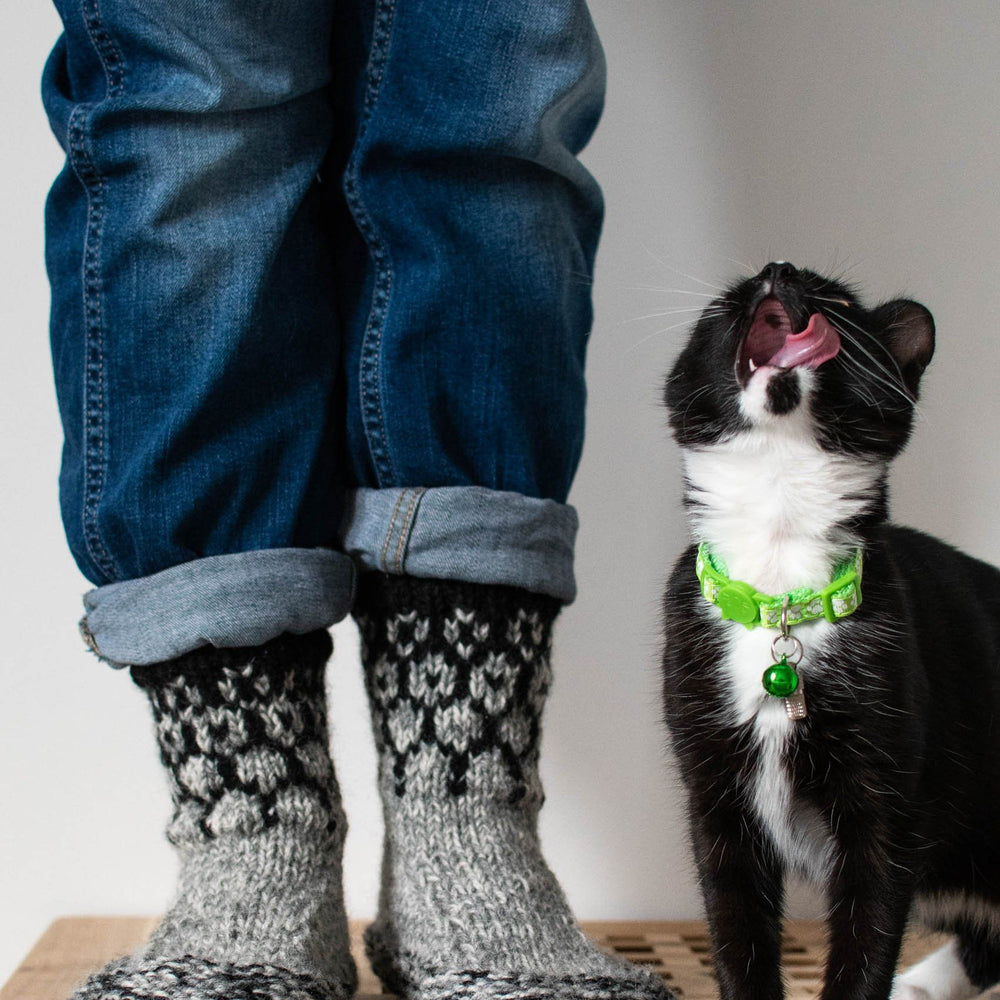
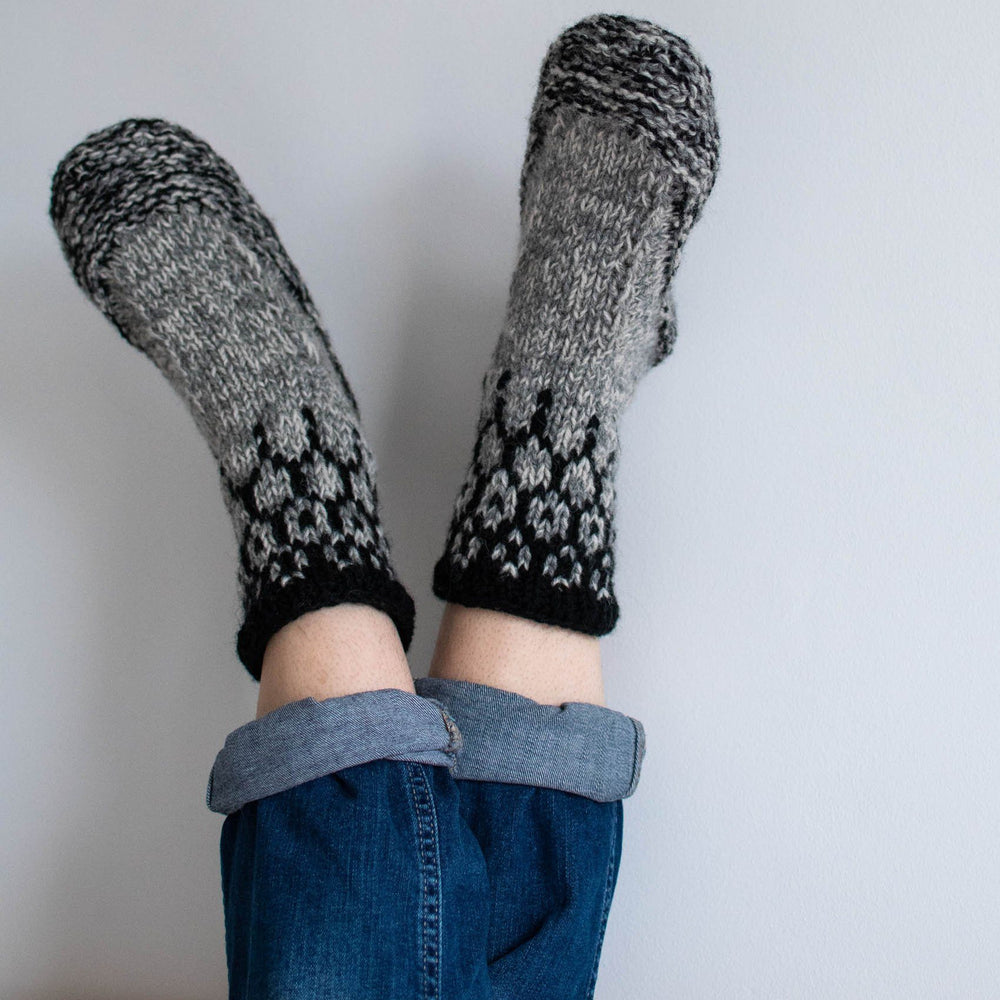
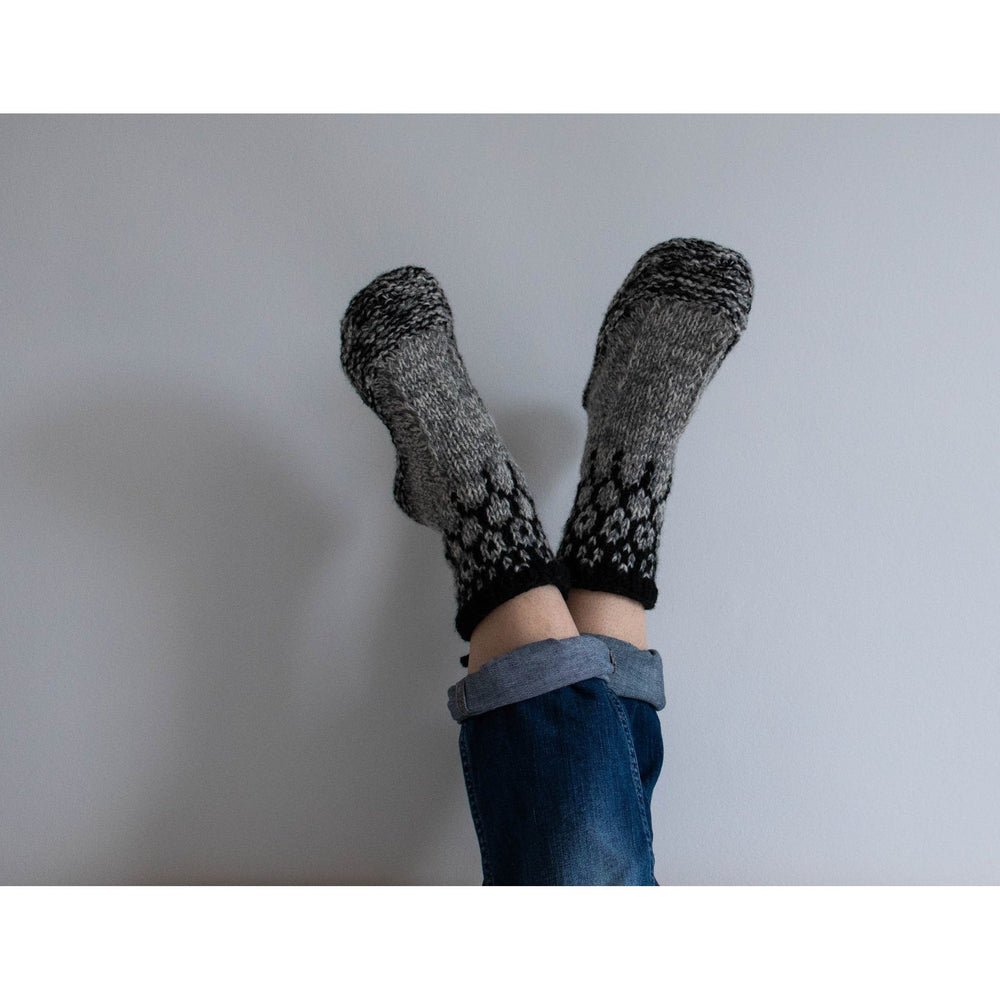
Details
The soles are worked in the round from the centre out, beginning with the kind of double sided cast on usually used for toe up socks. They use all three colours held together and are worked in garter stitch for a thick, cushioned sole. Both increases and short rows shape the soles into a comfortable, anatomical, shape that’s wider at the toes. Short rows are also worked to extend the soles over the toes. The third colour is then dropped and the upper foot continues with just two colours held together. The third colour is reintroduced (held doubled) as the contrast colour for the colour work cuff. The slippers are completed with ribbing in the contrast colour finished with an I-cord bind off that’s extended to make a hanging loop.
Skills for knitting this project
Build your skills by following the links to our clear step-by-step tutorials.
- knitting, purling
- casting on
- binding off
- short rows
- ssk decreases
- k2tog decreases
- colourwork (using a chart)
- make one increases
- working in the round
- working small circumferences in the round
Gauge
15 sts and 24 rnds = 4" / 10cm in stocking st in the rnd using smaller needle with 2 strands of yarn held together
Sizing
6 sizes to fit teens to adults.
xs[s, m, l, xl, xxl] To fit EU shoe sizes: 36-37[38-39, 40-41, 42-43, 44-45, 46-47] Shown in size small EU 38-39
Learn all of the skills you need to make Öröm with our beginner colourwork course. The Stranded Colourwork Basics course is a 4 week self-guided online knitting course, with continued access to the course so that you can return to each chapter for a refresher, again and again, whenever you need.
Supplies
Yarn
DK weight yarn. Tightly spun, hard
wearing non-superwash wool.
Shown in Rauma 3tr Strikkegarn (100%
Norwegian wool, 118 yds / 108m, 50g)
C1: 103
C2: 113
C3: 136
Needles and notions
US 9 / 5mm needles: either two 24" / 60cm or longer circulars for 2 circulars method or one 40" / 100cm or longer needle for magic loop.
US 10 / 6mm dpns or preferred needles for working small circumferences in the rnd
Yardage
C1: 165[190, 200, 210, 235, 250] yds / 150[175, 185, 195, 215, 225] m C2: 165[190, 200, 210, 235, 250] yds / 150[175, 185, 195, 215, 225] m C3: 95[105, 115, 115, 130, 140] yds / 95[105, 115, 115, 130, 140] m Choosing colours: C1 and C2 are held together throughout. They don’t need to be shades of the same colour but should blend well. Look for small variations in hue or value. C3 should contrast well with both C1 and C2.
Version information
















